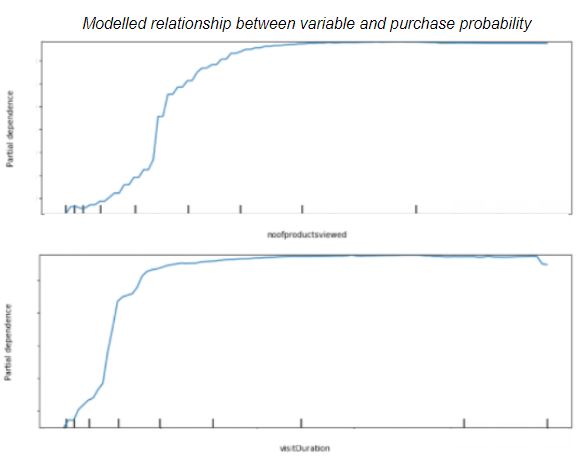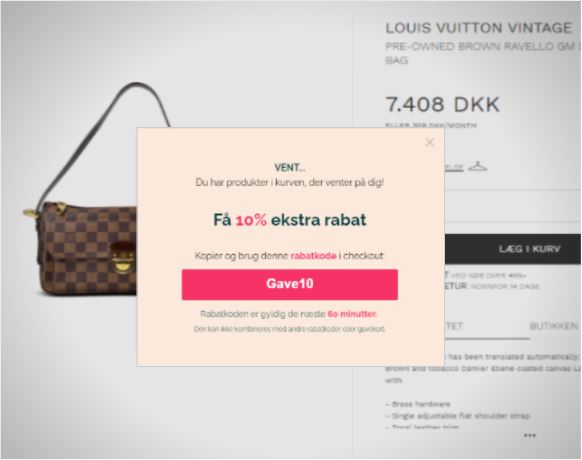Case Study: "On the Fence"-Users Popup
Minimizing abandoned carts with a machine-learning-model-based, highly targeted exit-intent popup.
Project Overview
As much as 81% of all website users abandon their online purchase after adding some item(s) to their cart. This is called the cart abandonment rate. This rate is a critical focus point for everyone trying to optimize their ecommerce performance. By lowering this rate, you are keeping the most relevant users on your site, thus increasing the chance they will complete their purchase and minimizing the risk that you will lose them to a competitor. In other words, we need to figure out how to maintain these on-the-fence users.
The Challenge
But how do you reduce the cart abandonment rate. One way to is to implement an exit-intent popup providing some relevant information that makes the user stay on the site.
However, defining such a feature without disturbing the users is a difficult task. Thus, several questions arise:
The Approach & Solution
To try to answer some of these questions, I started a project at Miinto to help keep the most relevant users on the site.
The project evolved around a trigger-based popup providing the following message: Wait... You have products in your cart waiting for you! Get 10% extra discount on your next purchase if you buy within the next 60 minutes.
The popup also displays the voucher code directly for the user. With this message in place, I just needed to define the triggering rules for the popup.
To only target the most relevant users, I decided to use in-session hit-level Google Analytics data from Google Bigquery to identify the most relevant behavioral patterns.
To this identification, I defined an in-session purchase probability model, in which I for each user session I could predict if the session would end in a purchase or not.
As inputs to this random forest model, I defined a long range of different user behaviors (fx using the navigation, making an onsite search, #clicked products from a product list, etc.).
After adjusting the model, it ended with an accuracy of +90%. From the feature importance measures, I could then derive the most important features for predicting if an user would end his/her session with a purchase.
In addition to having a product in their cart, the two other features with the highest contribution to the predicition were (1) the number of products viewed during the session and (2) the session duration.
Next step was then to do a partial dependence plot between these two features and the predicted probability of purchase in each session. You can see the modeled relationship between these variables in the picture below.
Both features show a S-shaped relationship with the purchase probability - thus, I could now easily define a threshold with which the popup could be triggered.


With the model in place, I then had to add one additional trigger required to be activated before the popup can be launched: the exit-intent.
This is a rather simple trigger to define for desktop; when you leave the viewport with your mouse, the popup should trigger. However, on mobile the exit-intent is more difficult to assess.
I found that a particular pattern of scrolling on mobile do tend to correlate with an exit event. Thus, if the user first scrolls far down a page on mobile, followed by scrolling back up by 50%, then the popup should trigger.
As a result, this was the final list of triggers that all have to met before the popup could be activated - The user has...:
These criteria heavily reduce the sessions that qualify for the popup, which exactly is the purpose, when we are providing a voucher code directly for the user. The popup is thus highly targeted at the most relevant users.
To test the impact of the popup, I decided to A/B-test it, meaning that only 50% of sessions that qualify for the popup would actually get it.
The Results
With the highly targeted triggering-rules, the volume of sessions qualifying for the test was not great compared to other splittests. However, the results was magnificient. When comparing the control and the test group, the popup had significant impact across all relevant parameters. The popup drove higher conversion rate, better engagement with the site, and more value from the orders. The only downside to this feature, is that it also drives a higher usage rate of voucher codes which in this case eats a good margin of the commission rate. Thus future iterations of this feature, must test other information messages and/or lower voucher code values. In addition, the behavioral triggers can be strengthened to allow even fewer relevant users.
Want to connect?
Please feel free to reach out, if you are interested in knowing more about me and my projects or want to connect and hear how I might help your organization.